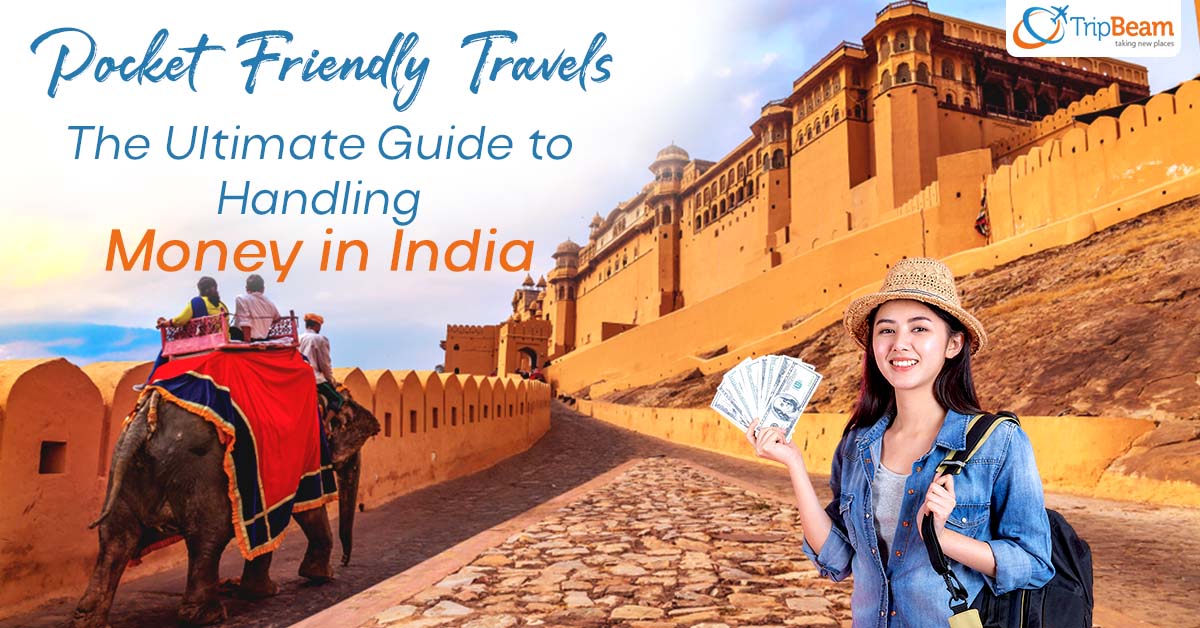
Are you wondering about going to India? Do you want to make the most of your trip to India while avoiding financial issues? If the answer is a loud “yes,” look into the complexity of Indian currency and currency conversion. This understanding will provide a worry-free journey, allowing you to fully enjoy your vacation. So, while booking cheap tickets to India from USA, just read this ‘Ultimate Guide to Handling Money in India’ comprehensively. Additionally, consider Tripbeam.com to book your tickets hassle-free.
Since you’ll be paying for travel expenses like bus tickets and the porters as soon as you exit baggage inspection, having local currency on hand, such as Indian Rupees, is usually convenient. As a result, you ought to schedule ahead of time and convert your USD or other currencies into Indian rupees. Keep reading to get all the details you need to convert money and manage your trip funds.
What is the official currency of India?
The national currency of India is the Indian rupee (INR). When visiting India, you can exchange dollars for rupees at the market rate. The Indian Rupee (INR) is typically expressed by the sign ₹. One current rupee, often known as an Indian rupee, is worth 100 paise. Banknotes and coins made from Indian rupees are available. The country has rupee coins for ₹1, ₹2, ₹5, and ₹10 available. The Indian market now circulates banknotes worth ₹5, ₹10, ₹20, ₹50, ₹100, ₹500, and ₹2000.
Is it legal to carry foreign currency, such as US dollars and Euros, into India?
Foreign currency is allowed to be brought into India, and there is no specified limit for travelers. Visitors can bring up to US$5,000 or its equivalent in another currency in coins and notes, or up to US$10,000 or its equivalent in coins, notes, and traveler’s checks into India without the need for disclosure.
If the total amount exceeds the minimum limit, a declaration becomes necessary. Before departure, ensure you have money in different forms readily available, including cash, credit cards, and traveler’s checks, as a precautionary measure. It is also advisable to keep them in multiple locations for increased security.
How Much Money Is Necessary for an India Trip?
Visitors to India, except Bangladeshi and Pakistani citizens, have the right to bring up to Rs 25,000 in Indian currency. Choose reputable and trustworthy cash exchange locations since they employ currency checkers, ensuring you receive real money and avoid scams. When visiting India, you can obtain genuine Indian rupee banknotes from banks, travel agencies, ATMs, debit and credit cards, and other reliable sources. Meanwhile, you can book your direct flights to Chennai from USA from Tripbeam, we have a wide range of affordable flight ticket options.
Where Can I Get Indian Currency When I’m in India?
It is easy to convert major currencies, such as US dollars, pounds sterling, and euros, into rupees in India. Some banks also accept other currencies like Australian and Canadian dollars.
Airports:
When you arrive at the airport, you can instantly convert your foreign currency for rupees at the currency exchange booths; however, the conversion rate is not particularly good. It’s appropriate to exchange modest sums of rupees only for transportation to your hotel and the city, where you typically receive better bargains on incidentals and other transit. Meanwhile, if you’re looking for your way to India from Canada, just book your tickets through Tripbeam.ca for a hassle-free experience.
Hotels:
Many hotels provide money exchange services. Verify the currency exchange capabilities of the Hotel and inquire about rates before making a reservation.
ATMs:
ATMs frequently provide the best conversion rates and are widely accessible in airports, cities, and outside banks. The majority of ATMs accept Visa, MasterCard, and Maestro. The withdrawal limit for Indian rupees ranges from ₹2000 (US$28) to ₹10,000 (US$141).
Is credit card payment possible in India?
Credit cards have become common throughout India, particularly in big cities like Delhi and Mumbai. Many hotels, expensive restaurants, and businesses accept credit cards. Smaller sellers only accept cash, so keep extra rupees as a backup. MasterCard and Visa are the most commonly used cards in India. American Express is often accepted at major hotels and restaurants. Certain banks allow cash advance withdrawals.
Some more useful Tips:
1). Normally, ATMs in India accept four-digit codes. If your PIN is lengthier, check with your bank to see if you can reset it before you travel.
2). Ensure that your card can access banking networks in India and understand the fees before you travel.
3). Tell your bank that you will use the card in India so that it doesn’t get blocked.
4). Keep your encashment papers (receipts) that you receive after you complete an exchange transaction. They will help you convert any remaining rupees to your home currency when you leave India.
5). Always refuse torn or dirty bills because they will be rejected when used.
6). Refrain from exchanging money with unlicensed money changers as it is against the law.
7). Browse through Tripbeam to book your direct flights to Cochin from USA, and to get most of your vacation in India.
Also Read: 7 Incredible Money-Saving Tips While Exploring India

